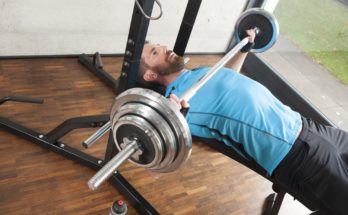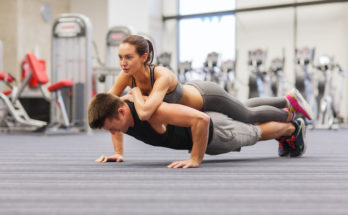As young children work their way through local learn-to-skate classes, some may find that they really love it and want to skate competitively. Figure skating can help children build their balance, strength, flexibility, fitness, focus, and artistic expression. As with any sport, though, injuries can happen.
A competitive skater can skate anywhere from 3 days a week to twice a day. Falls, poorly-fitted skating boots, and repeating the same motions again and again without enough time for recovery are some of the common reasons for injury. The good news: many figure skating injuries are preventable.
Here is an overview of common overuse injuries in youth figure skating from the American Academy of Pediatrics (AAP).
Common Overuse Injuries in Youth Figure Skating:
Skin Irritations
Blisters and calluses. Hardened skin and painful, fluid-filled bumps can form from friction. Pressure points may be caused by improperly fitted skates or boots laced too tightly. Using donut-shaped padding can help in irritated areas.
Lower leg skin irritation. To help avoid chafing at the back of the leg from the boot rubbing, use padding or wear silicone sleeves. Another option is to modify skates to include a soft, “closed-cell” dense foam material to replace part of the boot’s upper back.
“Lace bites.” Tight laces can cause a skin rash and pain in the tendon along the top of the foot and ankle. Boots may be too stiff or not deep enough for the shape of the foot. Consider reworking the lacing by adding midline lace hooks or alternating lacing patterns to keep the tongue in a neutral or slightly inward position to prevent outward movement of the tongue. Silicon sleeves and padding can once again be helpful.
Strains & Sprains
Ankle sprain. Sudden twisting or rolling the ankle can overstretch the ligaments, tough bands of connective tissue that keep the joint together. To help avoid a sprained ankle, make sure boots have enough upper support and are not worn out. Ankle strengthening, balance exercises, and allowing time for previous ankle sprains to heal lower the risk of re-injury.
Bunions. A painful bump may form at the base of the big toe as the bones change position from wearing tight boots. Bunions at the base of the “baby” (outside) toe are called “bunionettes.” According to research by the U.S. Figure Skating Boot and Blades Subcommittee, roughly 57% of skaters develop bunions. The bony bump can get bigger and begin to crowd the smaller toes. Make sure boots have good arch support and aren’t too narrow, especially in the toe area.
“Pump Bump.” Haglund’s deformity, often called “pump bump,” affects nearly half (49%) of figure skaters at some point. It’s often caused by repeated irritation from the heel slipping and rubbing against the back of the boot when boots that are too wide in back. Check the fit and add padding if needed.
Hammertoes. When the foot moves around too much inside the boot, skaters may naturally curl their toes to keep from slipping. Around 18% of figure skaters develop hammertoes, which can cause pain, swelling and a claw-like appearance of the toe. Prevention includes making sure boots are not too big or too wide.
Jumpers Knee (patellar tendonitis). Repeated leaping motions may cause pain in the front of the knee and around the patella (kneecap). Prevention includes limiting high-impact repetitions, proper stretching and a strengthening program of the thigh/hip/core muscles.
Bursitis. Bursae are fluid-filled sacs, and those around the foot and ankle joint can become irritated at pressure points. Two common types in figure skating:
- Malleolar bursitis (swelling at the inner part of the ankle bone). Stretch out boots at the sides and protect the ankles with silicon or gel sleeves. Use donut-shaped padding around the bony part of the ankle, but not directly over it.
- Retrocalcaneal bursitis (swelling of the bursa at the back of the heel bone). Make sure the boot is snug enough in the heel to prevent too much movement. Add padding if needed.
Tendonitis. Tendons are the tough bands that attach muscle to bones. They may become irritated in 20% of figure skaters at some point, causing tendonitis. The most common type is Achilles tendonitis (tendon at the back of the ankle/heel). Prevention includes regular calf stretching, strengthening exercises, avoiding overly stiff boots, and limiting jumps.
Plantar fasciitis. The band of tissue runs along the arch of the foot, connecting the heel bone to the toes, and can become inflamed if the skater’s Achilles tendons are too tight. Regular calf stretching and good arch support can again be helpful.
Hip Labrum tear. Figure skating involves repeated twisting and quick changes of direction, which can injure the labrum of the hip joint. Proper warm-up, stretching, and strengthening exercises such as side-leg raises and squats can help prevent this injury.
Stress Fractures & Bone Bruises
Shin splints. Also known as medial tibial stress syndrome, this condition causes pain along the tibia of the lower leg. It results from repeated, high-impact movements and involves muscle irritation with bony stress injury along the tibia of the lower leg. Rest and proper training can help mild cases, but talk with your pediatrician if this condition worsens or pain persists despite rest.
Stress fractures of the foot. Frequent jumps and landings take a toll and can lead to stress injuries of bones in the foot. These include the the metatarsals (five long bones running between the toes and ankle); the navicular (boat-shaped bone in the midfoot); and the sesamoids (pea-shaped bones within the tendon at base of the big toe). Prevention includes additional padding, especially under the forefoot, and avoiding excessive jumping.
Spondylolysis. A recent study found 30% of adolescent athletes with low back pain have spondylolysis, a bony stress injury of the lumbar spine. A number of factors may contribute to spondylolysis in skaters, including decreased foot flexibility from stiffer boots (popular for extra support during advanced twirls and jumps), which can lead to increased arching of the back to help maintain balance. This, along with repetitive high-impact landings, may cause the injury. Prevention includes proper training along with strengthening exercises for the core and lower back.
Apophysitis. For skaters who are growing, apophysitis (inflammation and pain where the muscle attaches to the growth plate) can be caused by overly tight muscles in the hip, thigh, and knee areas. One example of apophysitis is Osgood-Schlatter disease, which involves a growth plate near the knee, but apophysitis also appears around bony pelvic areas like the iliac crest. Stretching is especially important for prevention if skaters do a lot of repeated twists and turns during jumps.
AAP Tips to Prevent Figure Skating Injuries:Share the tips below with your child and his or her coaches.
|
A Word on Jumping:The process of jumping―and making it look easy and graceful while slamming into the ice on one foot―can over time result in sprains, twists, tears, and broken bones. In competitive figure skating, there can be a lot of pressure to develop young skaters. Some coaches believe that skaters need to be landing all of their double jumps by the age of 12. With intense competition, it’s not surprising that coaches may encourage their skaters to specialize very early. However, long-term health problems can develop even in the top competitive figure skaters when they’re pushed to perform triple jumps before puberty. |
|---|
Remember: When children stop smiling on the ice, that’s when it’s too much.
Let your child decide if he or she wants competition or to grow in figure skating. Pushing a child to excel is a formula for sports injuries and burnout―especially in an individual sport like skating.
Take steps to prevent skating-related injuries; do what you can to keep your child’s time on the ice fun and safe. If your child does develop aches and pains that don’t go away with rest, be sure to talk with your child’s pediatrician.




